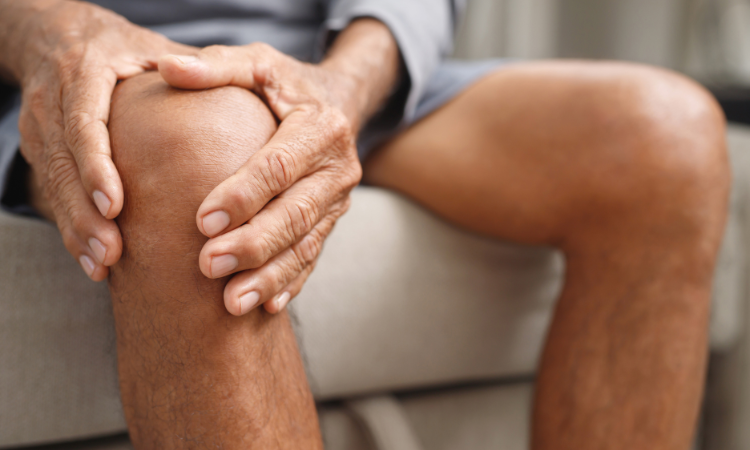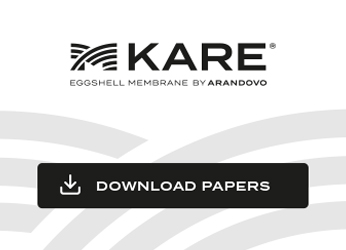Arthrosis is a medical condition that affects millions of people worldwide. It is a degenerative joint disease that can cause pain, stiffness and limited mobility. In this blog post by Arandovo, we will take a look at some of the Arthrosis symptoms, the different types that exist and the treatment options available to those who suffer from it.

What is Arthrosis?
Arthrosis, also known as Osteoarthritis, is a degenerative joint disease that affects millions of people worldwide, especially as they age.
The condition is characterized by the wear and tear of cartilage; the tough, elastic tissue that lines the ends of bones in a joint. Cartilage acts as a shock absorber and facilitates smooth joint movement. As the cartilage deteriorates, the bones may rub against each other, causing pain, inflammation and a range of uncomfortable symptoms.
It should be noted that Arthrosis is a chronic, degenerative disease, meaning that it worsens over time. Although there is no ultimate cure for Arthrosis, there are numerous treatments available to relieve the symptoms and improve the quality of life of those who suffer from it, as we will see below.
What are the symptoms of Arthrosis?
Symptoms of Arthrosis can vary depending on the affected joint and the severity of the disease. However, some of the most common symptoms include:
Joint pain
Pain is one of the most characteristic symptoms of Arthrosis. It can range from mild discomfort to severe and constant pain. It usually worsens with physical activity and improves with rest.
Stiffness
People with Arthrosis often experience joint stiffness, especially in the morning or after periods of inactivity. This stiffness can make it difficult to perform normal movements.
Loss of mobility
Over time, Arthrosis can cause a gradual loss of mobility in the affected joint. This can limit the ability to perform daily activities such as walking, climbing stairs or even getting dressed.
Inflammation
In some cases, Arthrosis can cause inflammation in the affected joint. In turn, this can cause swelling and increase the sensation of pain and discomfort.
Crepitus
Crepitus is a crackling or popping sound that may occur when moving a joint affected by Arthrosis. This sound is caused by the rubbing of damaged bone and cartilage.
Types of Arthrosis
Arthrosis can affect different joints in the body, and there are several types depending on the location:
Knee Arthrosis
Knee Arthrosis is one of the most common forms of this disease. Symptoms include knee pain, stiffness and difficulty when walking. Over time, joint deformity may become evident.
Hip Arthrosis
Hip Arthrosis affects the hip joint and can cause pain in the groin, hip or upper thigh. Mobility of the hip is significantly compromised in advanced cases.
Cervical Arthrosis
Cervical Arthrosis affects the cervical vertebrae in the spine. Symptoms include neck pain, stiffness, headaches and, in some cases, weakness or numbness in the arms.
Arthrosis in hands and fingers
Arthrosis can also affect the joints of the hands and fingers. This can make it difficult to perform everyday activities, such as writing, fastening buttons or grasping small objects.
Symptoms of cervical Arthrosis
Cervical Arthrosis, also known as Cervical Osteoarthritis, affects the spine in the neck area. Symptoms of this form of Arthrosis may include:
– Neck pain that may radiate to the shoulders and arms.
– Neck stiffness that gets worse in the morning.
– Headaches, especially at the base of the skull.
– Numbness or tingling in the arms and hands due to compression of nerves in the cervical spine.
– Loss of mobility in the neck, making it difficult to rotate and tilt the head.
Symptoms of hip Arthrosis
Hip Arthrosis affects the hip joint and can cause the following symptoms:
– Pain in the groin, hip or upper thigh area.
– Stiffness in the hip that makes movement difficult.
– Difficulty when walking or limping due to pain and stiffness.
– Crackling or popping sensation in the hip when moving it.
Symptoms of knee Arthrosis
Knee Arthrosis is one of the most common forms of the disease and can cause the following symptoms:
– Pain in the knee, which worsens with activity.
– Stiffness in the knee, especially after prolonged sitting or lying down.
– Swelling in the affected knee.
– Loss of mobility and difficulty bending or straightening the knee.
How to relieve the symptoms of Arthrosis
Although Arthrosis is a chronic disease that has no ultimate cure, there are several strategies and treatments that can help relieve symptoms and improve the quality of life of those who suffer from it. Some options include:
Drugs
Nonsteroidal anti-inflammatory drugs (NSAIDs) can help reduce inflammation and relieve pain. Analgesics may also be prescribed for chronic pain management.
Physical therapy
Physical therapy can help improve muscle strength and flexibility of affected joints. Physical therapists can teach specific exercises to strengthen muscles and improve mobility.
Weight loss
In the case of knee or hip Arthrosis, weight loss can relieve pressure on the joints and reduce pain.
Use of support devices
The use of certain devices such as canes, orthoses or splints can help reduce the load on affected joints and improve mobility.
Corticosteroid injections
In some cases, corticosteroid injections may be administered directly into the affected joint to reduce inflammation and pain.
Surgery
In severe cases of Arthrosis, when other treatments are not effective, surgery may be necessary. Options include arthroscopy, osteotomy and joint replacement. In advanced cases of knee or hip Arthrosis, joint replacement surgery, such as hip or knee arthroplasty, may be an option to restore function and relieve pain.
Eggshell membrane to relieve symptoms
In addition to conventional medical treatments, complementary and alternative therapies have been explored to soothe Arthrosis symptoms. One of these alternative options is the intake of egg membrane, also known as eggshell membrane, which has become increasingly popular in recent years.
MKARE has been developed by Arandovo, a 100% natural functional ingredient based on eggshell membrane that natively contains bioactive compounds to help people with Arthrosis.
In this case, the eggshell membrane containing MKARE is rich in type I, V and X collagen, elastin, glucosamine, hyaluronic acid and over 400 proteins that help improve joints, bones and the digestive system. These nutrients can help reduce inflammation, promote cartilage regeneration and relieve pain in people with Arthrosis.
Throughout this post, we have seen how Arthrosis is a disease that can cause a number of uncomfortable and painful symptoms, affecting the quality of life of those who suffer from it. However, with the right approach to treatment and symptom management, it is possible to improve mobility and relieve pain.
Symptoms of Arthrosis may vary depending on the affected joint and the severity of the disease. It is critical to recognize these symptoms early and seek appropriate medical attention to obtain a personalized diagnosis and treatment plan.
With the right support from healthcare professionals and by adopting a comprehensive approach to joint care, it is possible to lead an active life and reduce the symptoms of Arthrosis.
Check out our website now and discover all the benefits of MKARE as a natural food supplement based on eggshell membrane. If you have questions or need more information about our natural functional ingredient, you can contact us, we will be happy to help you.




